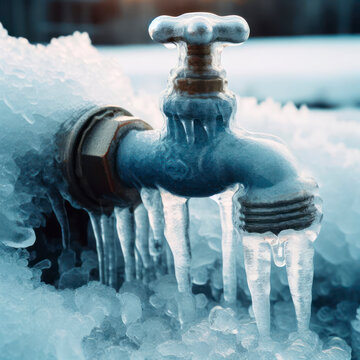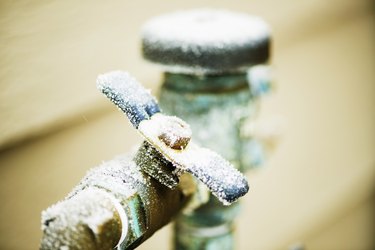Are you currently trying to find facts on Winter Plumbing Precautions: Preventing Frozen Pipes?

Winter can damage your plumbing, particularly by freezing pipes. Below's just how to avoid it from occurring and what to do if it does.
Introduction
As temperatures decline, the danger of frozen pipelines boosts, potentially leading to pricey repair services and water damage. Recognizing exactly how to prevent icy pipes is critical for house owners in cold environments.
Understanding Icy Pipes
What triggers pipes to ice up?
Pipelines freeze when revealed to temperatures listed below 32 ° F (0 ° C) for expanded periods. As water inside the pipelines ices up, it expands, taxing the pipeline walls and possibly creating them to burst.
Dangers and problems
Icy pipes can bring about water system disturbances, building damages, and pricey repair services. Ruptured pipelines can flood homes and cause comprehensive structural damage.
Indications of Frozen Water Lines
Determining icy pipes early can avoid them from rupturing.
Exactly how to determine frozen pipes
Look for lowered water circulation from taps, uncommon odors or noises from pipelines, and noticeable frost on subjected pipes.
Prevention Tips
Shielding prone pipelines
Wrap pipes in insulation sleeves or utilize heat tape to safeguard them from freezing temperature levels. Concentrate on pipes in unheated or exterior locations of the home.
Heating strategies
Keep indoor areas appropriately heated up, especially locations with pipes. Open closet doors to enable cozy air to distribute around pipelines under sinks.
Safeguarding Exterior Plumbing
Yard hoses and outside taps
Disconnect and drain pipes yard hoses prior to winter months. Install frost-proof faucets or cover exterior faucets with insulated caps.
What to Do If Your Pipelines Freeze
Immediate activities to take
If you suspect frozen pipes, keep taps open up to relieve pressure as the ice melts. Utilize a hairdryer or towels taken in warm water to thaw pipelines gradually.
Long-Term Solutions
Architectural changes
Consider rerouting pipelines far from outside wall surfaces or unheated areas. Add additional insulation to attic rooms, basements, and crawl spaces.
Upgrading insulation
Invest in premium insulation for pipes, attics, and walls. Correct insulation aids keep constant temperatures and decreases the risk of icy pipelines.
Final thought
Avoiding frozen pipelines needs proactive measures and fast reactions. By understanding the reasons, signs, and safety nets, house owners can safeguard their pipes during winter.
5 Ways to Prevent Frozen Pipes
Drain Outdoor Faucets and Disconnect Hoses
First, close the shut-off valve that controls the flow of water in the pipe to your outdoor faucet. Then, head outside to disconnect and drain your hose and open the outdoor faucet to allow the water to completely drain out of the line. Turn off the faucet when done. Finally, head back to the shut-off valve and drain the remaining water inside the pipe into a bucket or container. Additionally, if you have a home irrigation system, you should consider hiring an expert to clear the system of water each year.
Insulate Pipes
One of the best and most cost-effective methods for preventing frozen water pipes is to wrap your pipes with insulation. This is especially important for areas in your home that aren’t exposed to heat, such as an attic. We suggest using foam sleeves, which can typically be found at your local hardware store.
Keep Heat Running at 65
Your pipes are located inside your walls, and the temperature there is much colder than the rest of the house. To prevent your pipes from freezing, The Insurance Information Institute suggests that you keep your home heated to at least 65 degrees, even when traveling. You may want to invest in smart devices that can keep an eye on the temperature in your home while you’re away.
Leave Water Dripping
Moving water — even a small trickle — can prevent ice from forming inside your pipes. When freezing temps are imminent, start a drip of water from all faucets that serve exposed pipes. Leaving a few faucets running will also help relieve pressure inside the pipes and help prevent a rupture if the water inside freezes.
Open Cupboard Doors
Warm your kitchen and bathroom pipes by opening cupboards and vanities. You should also leave your interior doors ajar to help warm air circulate evenly throughout your home.

I discovered that article about Preventing and dealing with frozen pipes while doing a lookup on the internet. Sharing is nice. Helping people is fun. Thanks so much for going through it.
Information